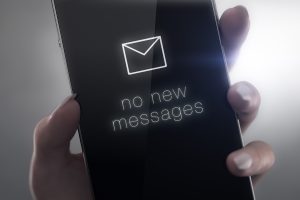The digital age has revolutionized how we communicate, introducing many internet slang terms that have seamlessly integrated into everyday language. These slang terms are not just casual expressions but have significantly shaped online and verbal communication, reflecting cultural trends and accelerating the spread of ideas. Here, we explore 17 internet slang terms that have become pivotal in shaping modern communication.
1. LOL: Laugh Out Loud
Perhaps the most ubiquitous of all internet slang terms, “LOL” expresses amusement in response to something funny. Used initially in early chat rooms and text messages, LOL has transcended digital boundaries to become a part of spoken language. It represents a moment of joy and has spawned variations like “LMAO” (laughing my a** off) and “ROFL” (rolling on the floor laughing), emphasizing stronger reactions of laughter.
2. BRB: Be Right Back
“BRB” communicates a short break from a conversation, typically when chatting online. It reassures the other party that the person will return shortly. This term reflects the fast-paced nature of online communication, where participants multitask but wish to maintain their conversation threads without causing misunderstandings about their sudden absence.
3. DM: Direct Message
To “DM” someone is to send a private message via social media platforms, bypassing public posting. It has revolutionized how people initiate private conversations directly without leaving the public eye. This term has become crucial in contexts ranging from professional networking to social interactions.
4. TBH: To Be Honest
“TBH” introduces sincerity or a confession into a conversation, signaling that the speaker is about to share a truth or a personal opinion. This slang helps to prefabricate responses requiring more transparency and is often used to preface constructive criticism or personal feelings.
5. SMH: Shaking My Head
Used to express disbelief or disappointment, “SMH” indicates a non-verbal gesture of shaking one’s head in response to actions or statements perceived as foolish or perplexing. This term conveys a level of emotional response that textual communication might otherwise lack, providing a concise expression of disapproval.
6. FOMO: Fear Of Missing Out
“FOMO” describes the anxiety that arises from the perception that others might be having rewarding experiences from which one is absent. This term is particularly relevant in the age of social media, where the constant display of others’ experiences can induce a feeling of exclusion and anxiety to stay continually connected.
7. TFW: That Feel When
“TFW” expresses a relatable emotional reaction to a specific situation depicted in memes or messages. It’s a prelude to personal or fictional scenarios that evoke a sense of shared understanding or commonality among internet users.
8. IMO/IMHO: In My Opinion/In My Humble Opinion
These acronyms are staples in online discussions, indicating that the following statement is a personal viewpoint. “IMO” and “IMHO” are used to frame statements as opinions rather than facts, which can help to soften potential online disagreements by clarifying that what follows is subjective.
9. NSFW: Not Safe for Work
“NSFW” is a warning that content may not be appropriate for viewing in professional or public settings. It acts as a courtesy label to prevent exposure to potentially offensive material, reflecting the blending of personal and professional life where digital content is ubiquitously accessible.
10. IRL: In Real Life
“IRL” distinguishes between activities or interactions occurring in the physical world instead of the online world. It highlights the dichotomy between digital personas and real-world identities, underscoring the complexities of modern social interactions.
11. BAE: Before Anyone Else
Originally standing for “Before Anyone Else,” BAE is now commonly used as a term of endearment for a significant other. It reflects the playful and evolving nature of language in digital communications.
12. Yeet
This slang term is used to express excitement or approval or, alternatively, to describe the action of throwing something with force. Its popularity underscores how internet slang can evolve from obscure origins to mainstream usage.
13. Ghosting
“Ghosting” describes suddenly cutting off all communication with someone without explanation. Emerging from online dating culture, it has become a recognized pattern in other types of relationships, highlighting changing dynamics in personal interactions.
14. Vibe Check
A “vibe check” is a spontaneous or humorous assessment of the emotional or aesthetic atmosphere of a person or place. It reflects a collective recognition of and attention to the subtle energies in social interactions.
15. Flex
To “flex” is to show off, typically used to describe someone flaunting their successes or possessions, often ironically. It’s indicative of a culture that simultaneously celebrates and mocks displays of wealth or achievement.
16. Salty
Being “salty” refers to displaying bitterness or irritation, usually in a humorous context. It’s a term that captures the essence of playful banter and light-hearted reproach online, often used when someone appears unduly upset or resentful over minor issues.
17. Canceled
Declaring someone “canceled” is socially ostracizing a person or brand due to objectionable behavior or statements. This term is central to the “cancel culture” phenomenon, where social media is used as a platform for public judgment and accountability.
Internet Slang Terms Continuously Change Modern Communication
These 17 internet slang terms have not only enriched the tapestry of modern communication but have also helped to navigate the complexities of digital interactions. They offer insights into societal trends, emotional states, and the collective consciousness of the digital age, reflecting the evolving nature of language and interaction in our connected world.
Read More:
Decoding the 11 Most Confusing Phrases in American English
TikTok Ban: 8 Ways Eliminating the Platform in the Us Impacts Finances
Catherine is a tech-savvy writer who has focused on the personal finance space for more than eight years. She has a Bachelor’s in Information Technology and enjoys showcasing how tech can simplify everyday personal finance tasks like budgeting, spending tracking, and planning for the future. Additionally, she’s explored the ins and outs of the world of side hustles and loves to share what she’s learned along the way. When she’s not working, you can find her relaxing at home in the Pacific Northwest with her two cats or enjoying a cup of coffee at her neighborhood cafe.



















Leave a Reply